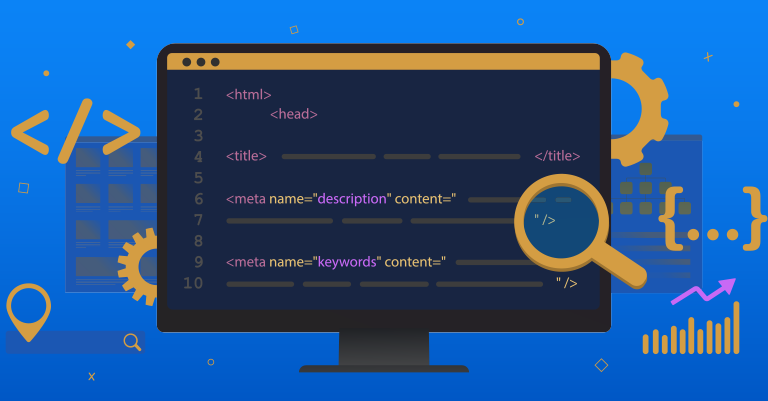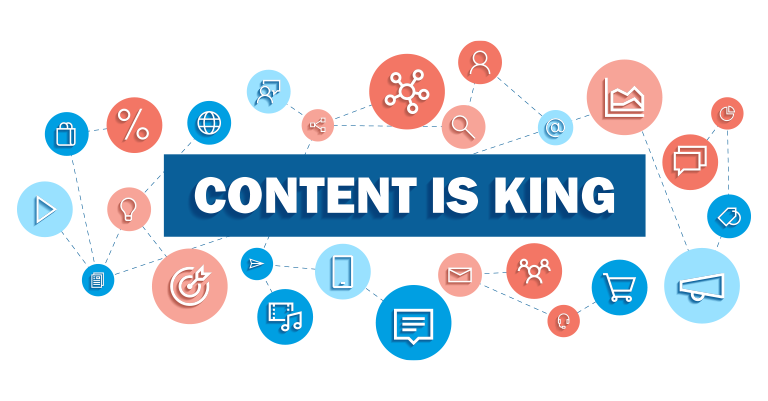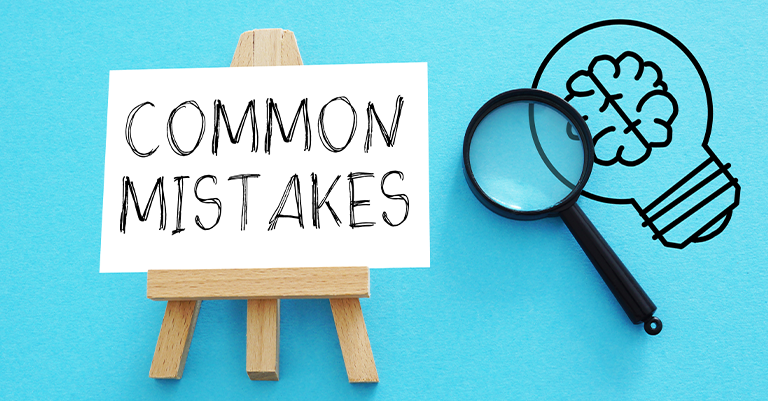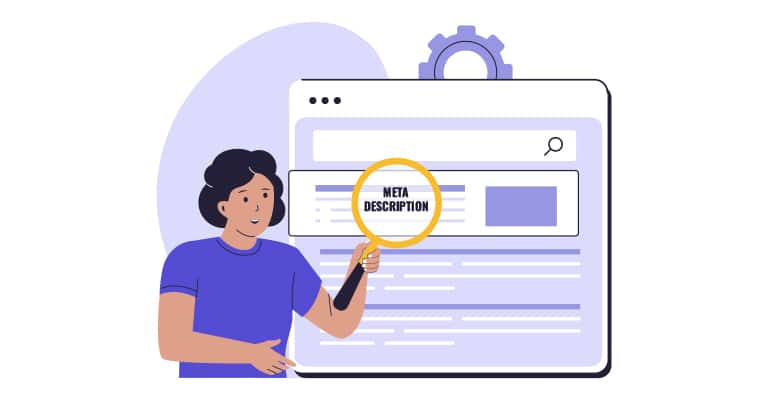Navigating the online world can be like finding a needle in a haystack. However, meta descriptions are one of the best tools you have. This short snippet on a search results page under your website link can determine if someone clicks on your link. Writing good meta descriptions can boost your click-through rates and increase your site’s traffic. Let’s learn how to create meta descriptions that attract and engage people.
What Makes a Meta Description Effective?

A meta description is a short snippet, but it’s really important. Here’s why:
- First Impression: It’s the first thing people see. A good description can make them want to click.
- Gets More Clicks (CTR): A good meta description can make more people click on your link.
- Tells People What to Expect: It shows what’s on the page, so people know what they’ll find.
Ensure your meta description is clear and says what the page is about. This helps people decide whether to click and learn more. It’s not just about getting clicks; it’s about getting the right clicks.
Key Elements of the Best Meta Descriptions
- Use Exciting Words: Write in a way that makes people want to click. Instead of saying, “This page gives information about…,” try “Discover amazing facts about…”. Make it interesting and urgent.
- Keep It Short: Aim for 150-160 characters. If it’s too long, it gets cut off. If it’s too short, it might not tell enough. Think of it like writing a tweet about your life. Make it short, sweet, and full of info.
- Use Keywords: Add important words that show what your page is about without overdoing it. This helps search engines understand your page.
- Describe the Page: Make sure the description matches what’s on the page. This way, people find what they’re looking for.
- Add a Call to Action (CTA): Tell people what to do next, like “Learn more,” “Discover,” or “Find out how.”
Crafting Meta Descriptions for Different Types of Content

- Blog Posts: Share the main idea or insight. For example, “Learn how to be more productive with these easy tips.” Think about what makes your post special. Are you sharing new ideas or tips? Make sure to show that.
- Product Pages: Highlight what makes the product special and add urgency. For example, “Save 20% on the newest gadgets today only!” Emphasize deals, discounts, or limited-time offers. People click when they feel they might miss out on something valuable.
- Service Pages: Focus on benefits and solutions. For example, “Transform your home with our expert remodeling services. Free quotes available!” Show how your services can solve a problem or make life better. A meta description that answers a potential client’s question can be very appealing.
Best Practices for Writing Meta Descriptions
- Be Unique: Don’t use the same meta description for different pages. Each one should match its specific content. Think of it as a fingerprint—unique and special. Using duplicates makes them less effective and can confuse people.
- Use Active Voice: Active words are more engaging than passive ones. They keep the reader’s attention and make the action immediate. It’s more exciting to say “Join the adventure” than “The adventure can be joined.”
- Avoid Clickbait: Ensure your description matches the content to avoid disappointing users. Clickbait might get clicks, but it won’t keep fans. People appreciate honesty, so deliver on your promise in that small snippet.
- Leverage Emotional Triggers: Words that create emotions can make your meta description more persuasive. Words like “amazing,” “secret,” or “unbelievable” can evoke feelings. But be careful—not to overuse them, or it may sound like an infomercial.
- A/B Testing: Test different descriptions to see which ones work best and improve them. Testing helps you stay effective in the ever-changing digital world. What works today might not work tomorrow, so be ready to adapt.
Common Mistakes to Avoid

- Keyword Stuffing: Don’t overload your description with keywords. It can seem spammy and unappealing. It’s like trying to wear all your favorite clothes simultaneously—too much and ineffective. Keep it natural and relevant.
- Vague Descriptions: Make sure your meta description summarizes the page content clearly and concisely. Being vague is like offering a mystery box. It might be intriguing but disappointing if the content doesn’t match.
- Ignoring Mobile Users: With many people searching on their phones, ensure your meta description looks good on small screens. Mobile users are increasing every day. Ensure your description is readable and enticing, even on the smallest screens.
The Power of Emotional Appeal
Meta descriptions are more than just facts. They help you connect with users emotionally. You can make your descriptions more memorable and motivating by touching their emotions.
- Create a Sense of Urgency: Phrases like “Don’t miss out!” or “Limited time offer!” can make users act quickly. Urgency makes people act. Users who think they might miss something valuable are more likely to click.
- Foster Curiosity: Use words that make users want to know more. Curiosity is powerful. A good question or interesting statement can draw users in, making them eager to learn more.
- Highlight Benefits: Show users what they gain by clicking on your link. People click when they see a clear benefit. Whether it’s learning something new or solving a problem, highlight the value.
The Art of A/B Testing Meta Descriptions

Testing different versions of your meta descriptions helps you see what your audience likes. It’s not about getting it perfect the first time but improving based on what you learn.
- Experiment with Language: Try different tones, words, and styles to see what works best. Even a small change can make a big difference in engagement. Don’t be afraid to try new things.
- Monitor Performance: Use analytics to track how different descriptions do in terms of click-through rates. Data helps you make smart choices in digital marketing. By watching performance closely, you can decide which strategies to keep using.
- Iterate and Improve: Use what you learn from testing to keep refining your meta descriptions. The digital world is always changing, so stay ahead by regularly updating and improving them.
Why Length Matters
The best length for a meta description is about 150-160 characters, but it can look different on various platforms and devices. It’s important to optimize for all scenarios.
- Avoid Truncation: Ensure your main message appears early in the description to avoid getting cut off. Important information can be lost if truncated, so the most critical points are at the beginning.
- Consider Mobile Users: Mobile screens show less text, so keep your description short but complete. Mobile optimization is essential. Write descriptions that look good on any device.
- Be Concise but Complete: It’s challenging but important to be brief and complete. Every word counts, so ensure each word adds to the overall message.
Closing Thoughts
Crafting the best meta descriptions is both an art and a science. By focusing on clarity, relevance, and engagement, you can create powerful snippets that improve your click-through rates and align perfectly with user intent. Remember, it’s your digital handshake—so make it firm and inviting. Keep testing and refining your meta descriptions, and watch your online presence grow stronger and more influential. With these strategies in your toolkit, you’re well on your way to mastering writing the best meta descriptions. For personalized assistance in optimizing your on-page SEO, reach out to Andrew Roche today and take your online presence to new heights!




